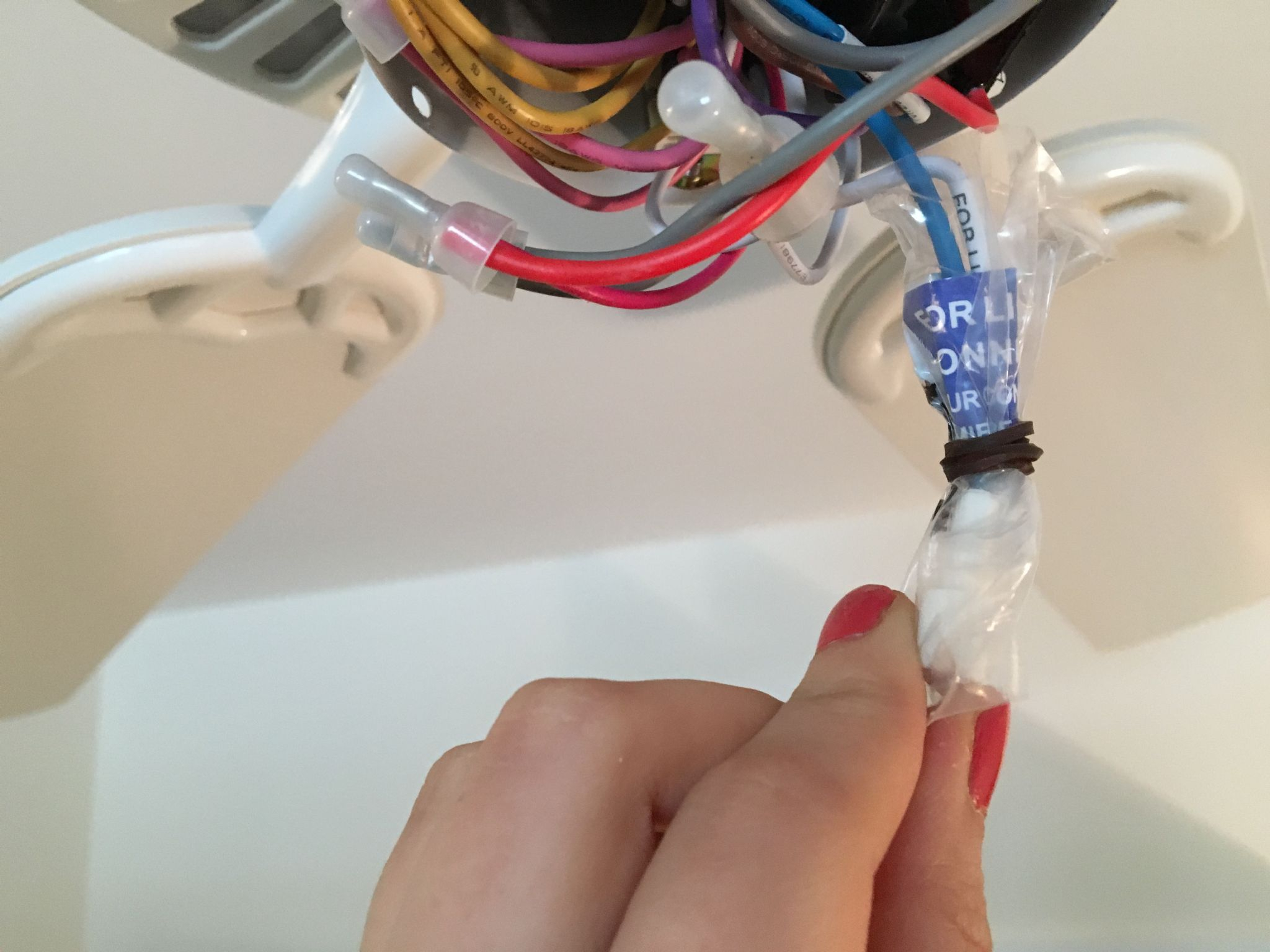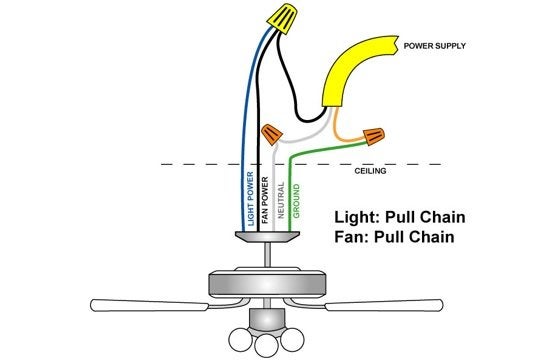
This installation features a pass-through, with light switches on each side of the room and two sets of wires. Line up the bracket and box screw holes, then secure the nuts provided in your kit. Slip the U-bolt or bracket over the brace, then feed the wires through the cable connectors. Screw the green grounding screw into the designated hole. Start by punching out holes for your wires, then install cable connectors, making sure you’ll be able to access the screws if you need to make adjustments. Preparing your new fixture box before you install it will make installation much easier. Twist the bar until both ends meet the joists, then tighten with tongue and groove pliers. Slip the brace into the ceiling hole with its feet on the inside of the drywall and its bar centered over the hole. Fan braces are typically sold as a kit that includes a brace, box and bracket or U-bolt.


Without attic access, you’ll need a fan brace that can be installed from below. If you have an attic that enables access from above, you can use a box that attaches to the joist. Your fan-rated box will need to be supported by ceiling joists. You may need to use a mini hacksaw to remove the strap to make room for the new electrical box. If your fixture box is hanging from a strap, remove the nut or screw holding it in place. If it’s nailed to a joist accessible from an attic, use a hammer or pry bar to remove the box and nails. If your current fixture box is screwed to a ceiling joist, simply remove the screws. Conventional light fixture boxes aren’t strong enough to support a fan, so you’ll need to replace it with one that’s fan rated. You’ll be left with a white wire, a black wire, and a bare wire. Remove the wire nuts, untwist the wires, and disconnect the ground wire from the fixture box with a screwdriver. Cut any wires connected to the old fixture and, if necessary, remove the mounting strap. Test each wire with a non-contact circuit tester to avoid dangerous shocks.ĭisconnect old fixture and strap. Loosen the screws, twist the base and then pull the base over the hole. Fixtures are typically held in place with screws and a mounting strap. Remove the glass cover and light bulbs from your old fixture. If it doesn’t turn on, you’re ready to begin. Confirm the power is off by switching on the fixture. Start by turning off the breaker connected to the circuit you’ll be working on. Throughout the video, we’ll alert you regarding when you should and should not use the safety gear. To replace a light fixture, be sure to equip yourself with the proper safety gear.

Here’s what you’ll need for this intermediate-level project: To replace a light fixture with a fan, all you’ll need is about two hours and some basic supplies. It can also help reduce your home’s heating and cooling costs. A ceiling fan is a great way to make any room more comfortable.


 0 kommentar(er)
0 kommentar(er)
